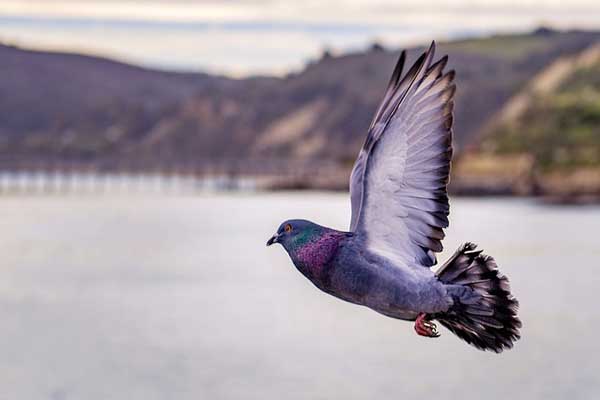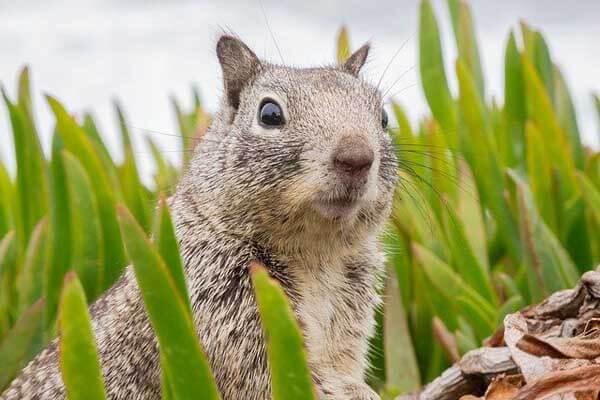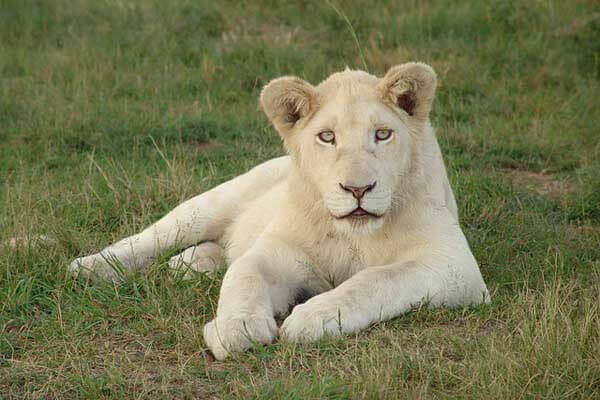Lemmings, amazing inhabitants of the tundra, have long attracted the attention of scientists by their migrations and incredible fecundity.
These small rodents of the hamster family play a very important role in the balance of the tundra.
Paradoxically, but without these small animals in the conditions of the north, many species of animals and birds that inhabit these harsh places could not exist. The reason is that lemmings are the main type of food for northern predators.
Looking at these nimble animals, you would not think that they have a hard life. These either mice or hamsters are constantly on the move. They are very active, all the time running somewhere, in a hurry, and all the time chewing.
Moreover, lemmings do not eat as they please, but according to a schedule. For about an hour they eat intensively. Then for an hour and a half to two hours they hide and sleep. Then again, one hour of eating and two hours of rest. In between these important processes for them, they still manage to look for food, take a walk, and engage in life-extension procedures. But the main thing is food. And so all the year-round, at any time of the year, summer or winter.
What do lemmings eat in summer?
They are not fussy about food and are nearly omnivores. But their diet has to change depending on the season. This is because there is a huge difference between summer and winter weather conditions in the Tundra. Summers are short but warm and sometimes even hot, and then the tundra is covered with a carpet of vegetation. This time of year is a free-for-all for lemmings.
In summer, lemmings eat everything that grows around them. These are herbaceous plants and berries: cloudberries, blueberries, bilberries, veronicas, bramble, which are abundant in this region in summer. Lemmings can eat sedge, mushrooms, seeds of plants, and if they are caught, any insects. If the year is good, lemmings multiply rapidly due to the abundance of food, and as a consequence, the increase in their numbers ensures good nutrition for all wildlife, both animals and birds, because lemmings are food for them. But summer in these parts is very short and cold days come quickly.
What do lemmings eat in winter?
In August, the lush vegetation dies out, and in autumn the tundra is covered with shriveled grass, and in some places, it becomes almost naked. Only in the lowlands the areas remain covered with lichen. Now the menu of lemmings is considerably reduced. The short northern summer ends and the long winter sets in. And now these polar region aborigines have to start eating the so-called bottom-feed.
The main diet at this time is the reindeer moss, but in fact, it’s not even moss and not a plant at all, but a peculiar lichen which in principle belong to a special category of organisms, but it is quite nutritious. Therefore, with a large amount of moss, the lemmings are not in danger of starvation. Besides lichen, lemmings feed on bark on bushes, rake snow and get to roots of various plants, gnaw birch bark on trunks of dwarf birch or polar willow. Green or peat mosses are also a great help in lemming nutrition.
They gladly eat eggshells from abandoned bird nests. In places where reindeer graze, old antlers dropped by reindeer are left under the snow, which lemmings easily cope with, crushing them into small pieces with their powerful front incisors. When cold and snowstorms come, lemmings don’t hibernate but are active. Under the snow in the mossy marsh litter or inside bumps, they arrange spacious burrows with deep passages, make stores there, and breed. Digging tunnels under the snow, they extract plant roots and thus replenish their ration; on warm days, they go outside.
Lemmings eat a lot of food. An adult animal can eat twice as much food as it weighs in a day. Therefore, it is not surprising that lemmings sometimes devastate places where they live. It doesn’t happen often, once every few years. But when that happens, lemmings are forced to look for new places to settle. That’s when the famous mass lemming migrations happen. First one at a time, then in huge living avalanches, lemmings move in one direction known only to them, devouring everything on their way. If they encounter bodies of water on their way, this does not stop them, they throw themselves into the water and swim to the other shore, and then move on. And although a large part of them die during such crossings, it saves the lives of the survivors.
Old-timers of the north say that during one of these migrations, clouds of lemmings passed through one village, eating everything in their way. After that, the village ceased to exist. Well, to what extent this is true is unknown, but the periods of lemming migration become a feast for all the inhabitants of the tundra because they become easy to prey on the way. Four-legged and feathered predators pounce on the unthinking lemmings during the transition and devour them by the thousands and feed them to the slaughter for their young. In such years the number of birds and animals in the polar region increases several times. So, at the cost of their lives, these animals help to save many of the inhabitants of the far north.
How to keep lemmings and what to feed?
Since lemmings look quite cute, in recent years there have been many people willing to get them as pets.
However, not everyone manages to keep this animal in the home for a long time. The main thing is to create their usual conditions.
Keep them in a spacious cage, as they are very active, they can frolic around the clock.
On the floor of the cage must be placed volumetric covering, from which they could make a nest and make their passages. It can be dry moss or twigs, but surely natural, synthetic materials must not be put down because they might try to use it for food.
It is better to keep them in pairs. They are used to coolness, so the cage should not be in a heated room.
Since they are undemanding in their nutrition, they can be fed with whatever is left from the host’s table.
But in addition to that, their diet must include:
- Breadcrumbs – almost all kinds of cereals.
- Fresh and dried fruits and vegetables.
- Whole grains and herbs.
Keep in mind that although lemmings look like the most ordinary hamsters, they are far from being so friendly. They are quite capable to pounce and even bite. Besides, at the period of puberty, they are rather boisterous and you will hardly manage to tame them. Still, while lemmings live about two years in the wild, they can last about four years in a proper home environment. Know, though, that they won’t let you get bored, day or night. Good luck!
What do lemmings eat? The diet of lemmings
Lemmings are omnivores. Their diets consist mostly of lichens, mosses, bark, and other plant matter. They also eat various grasses. They do not eat caribou, reindeer, or reindeer moss, although they may occasionally eat them if they are able to find it. Their diets vary depending on their environment, so it is not uncommon for you to see them eating a wide variety of plants.
Lemmings generally eat grass and moss, but they will eat leaves, berries, and insects. They will also bite the horns of deer, which is a source of protein and fat. Because they are scavengers, lemmings don’t require much in the way of protein or calories. In addition to eating plant material, lemmings will gnaw on roots and moss.
Lemmings also eat a variety of plant materials, including sedges and shrubs. They may eat insects and berries as well, but they typically forage for about 1.5 meters in diameter. They will also gnaw on deer antlers and moss. If they are in the wild, they will also scavenge rotting plants. This means that they can be extremely difficult to control and you may have to watch out for them!
Another important food source for lemmings is reindeer moss. This is commonly called deer moss, but it is actually a lichen. The moss is rich in nutrients that are beneficial for lemmings. The lichens also help them absorb more water, which is another reason why they have so much energy. However, lemmings’ diets are dependent on the availability of a nutrient-rich food source.
In addition to the tundra, lemmings also eat various plants and berries. During the summer, their diets consist of sedges and twigs of shrubs and trees. They also eat insects and deer antlers. In the winter, they feed on moss, lichen, and berries. In the winter, they eat mainly grass and other vegetation.
Lemmings are herbivorous and prefer to store food for later use. Some species of lemmings make burrows where they store food, while others find food under the snow. For an average weight of less than one kilogram, lemmings consume about 50 kg of plant biomass a year. They are not known for their hunting habits but are known to feed on dead animals and eggs.
The diet of lemmings varies greatly. In winter, they eat fresh grass and sedges, and in summer, they eat mosses, except for sphagnum. In the summer, they eat frozen plant material and monocot leaves. They can stay in a burrow for two to three hours a day. The average lemming weighs between 10 and 20 grams.
Lemmings are omnivorous. They eat a variety of plant materials, but their main diet consists of sedges, roots, grass, and berries. The animals spend most of their time in their burrows. These creatures are also a part of many ecosystems. They can be found in arctic, subarctic, and alpine tundras, and can even be found in the tropics.
A lemming’s diet consists mainly of sedges. In the winter, they also eat old antlers. They crush these antlers using their powerful front incisors. In the spring, they eat a variety of berries and roots. These foods are plentiful in the forest, which means that lemmings don’t need to rely on canned foods for nutrition.
Lemmings eat a variety of plant materials, including lichens, mosses, and grasses. They prefer cotton grass and sedges, but they will eat berries and other fruits, too. Unlike other animals, lemmings can withstand low temperatures and are highly resistant to diseases. Therefore, they are essential to the ecosystems of their habitats. There are two main types of lemmings – the northern and southern bog lemmings and the sedge lemmings.
Lemmings are herbivorous and feed on arctic willow, sedge, and shrubs. They are active all year round and can eat more than twice their body weight in a single day. They are highly adaptable to arid climates. They can withstand high temperatures, which is crucial for their survival. In addition, lemmings have very diverse diets.








